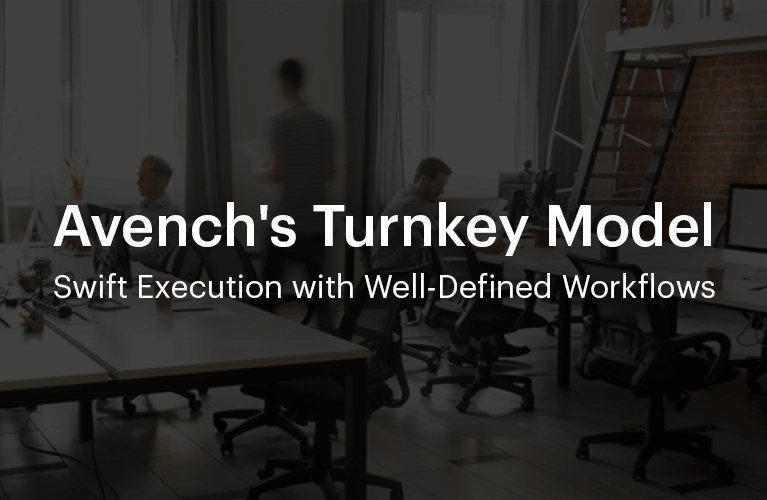

Useful for projects where requirements are not likely to change during the turnkey model development process.
This type of engagement model is suitable when there are well defined goals, and projects are short term. Also, when there are no changes in the scope of project execution, the project is for minimum viable products or prototypes, and the initial documentation is ready.
Key Differentiators:
- Well-defined workflow
- No budget overflows
- If required, the client can request for changes in engineering
- For better execution, the project can be divided into small modules
- Faster execution time
In a fast-paced software development world, choosing the right affiliate strategy can make all the difference. Avench’s Turnkey Model provides a flexible approach that is ideal for projects with well-defined goals, short timelines and a clear vision. This blog post dives into the key differences of the Turnkey Model, helping you decide if it’s the right fit for your next turnkey software development project.
Suitable for positioning and speed turnkey software development
The Turnkey Model shines when dealing with projects where requirements are unlikely to change dramatically during development. This applies to situations with well-defined objectives, a short-term timeline, and a clear understanding of the desired outcomes. It is particularly well suited for projects such as:
Minimum Viable Products (MVPs): Launching an MVP allows you to test basic functionality with real users and quickly gather valuable feedback. Turnkey Model’s structured approach ensures rapid development and delivery, allowing you to get your MVP to market faster.
Prototypes: MVP-like prototypes help visualize ideas and gather user feedback. The Turnkey Model’s focus on standardized business processes drives improvement, enabling you to rapidly build responsive prototypes for testing and modification.
Projects with existing documentation: If you have a detailed baseline document describing project requirements and functionality, the Turnkey Model can use this existing information to facilitate development.
Key Differentiators: A Structured Approach to Success
Several key differentiators distinguish the Turnkey Model from other engagement models:
Well-Defined Workflow: A structured, pre-defined business plan ensures a clear path for improvement. This reduces surprises and keeps the business on track, allowing for predictable timelines and better resource allocation.
No Budget Overflow: With fixed space and pre-defined resource allocations, the Turnkey Model enables cost predictability. The risk of exceeding the budget is minimal, ensuring economic stability throughout the development process.
Flexibility of Engineering Change: While the Turnkey Model emphasizes a fixed scope, it is not entirely inflexible. If necessary, customers can request technical changes. However, it is important to note that such changes may affect timelines or costs.
Enabling Modular Development: Turnkey software development models allow tasks to be broken down into smaller manageable modules for further efficiency. This modular approach facilitates parallel embedded software development, which can lead to faster completion times.
Faster Turnaround Times: The combination of well-defined workflows, pre-allocated resources and minimal on-site changes helps maximize profitability – faster turnaround times This is ideal for businesses with a quick time-to-market critical.
Key Features: A Recap for Informed Decisions
Here’s a quick recap of the key features of the Turnkey Model development:
Suitable for projects with fixed requirements: This model thrives when the chances of core requirements changing during development are low.
Streamlined business planning and cost control: A pre-defined business plan ensures efficient growth and reduces the risk of budget overruns.
Limited flexibility for feature modifications: While some technical changes can be accommodated, major product changes can affect timelines and costs.
Focus on speed: Structured route and dedicated space help with quick turn around times, ideal for projects that require a quick start.
Choosing the Right Model: Aligning Needs with Approach
The turnkey model offers robust solutions for projects with well-defined goals, short timelines and a clear vision. By taking advantage of its structured roadmap, predictable costs, and rapid deployment time, you can get your turnkey software development solution to market faster and more efficiently. However, it is important to consider the specific needs of your project. If significant changes in features are expected during development, a more flexible association model may be more appropriate. Avench offers a variety of communication systems to meet business requirements.
Contact Avench today for a free consultation to find the model that best fits your project’s needs.

Key Features
- Suitable for projects where requirements are not likely to change during the development process
- Well-defined workflow and no budget overruns
- Limited flexibility for feature modifications through the development cycle
- Faster execution time
